Cold Chain Logistics: Management Challenges & Solutions
The supply chain is a term used to describe all the components required to transport goods from beginning to end, from production to the end...
12 min read
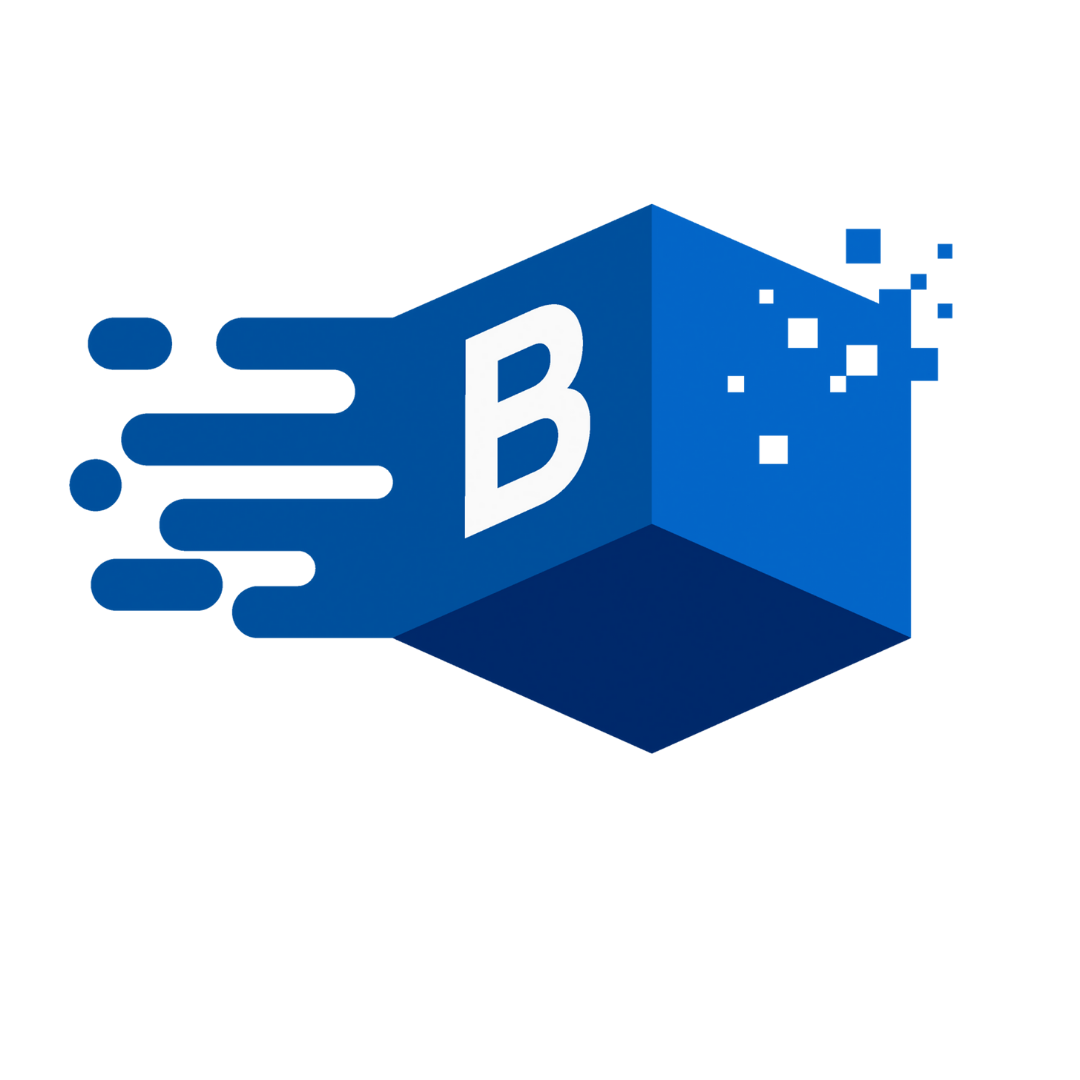 BUKU Marketing
:
Feb 1, 2023 1:38:00 PM
BUKU Marketing
:
Feb 1, 2023 1:38:00 PM
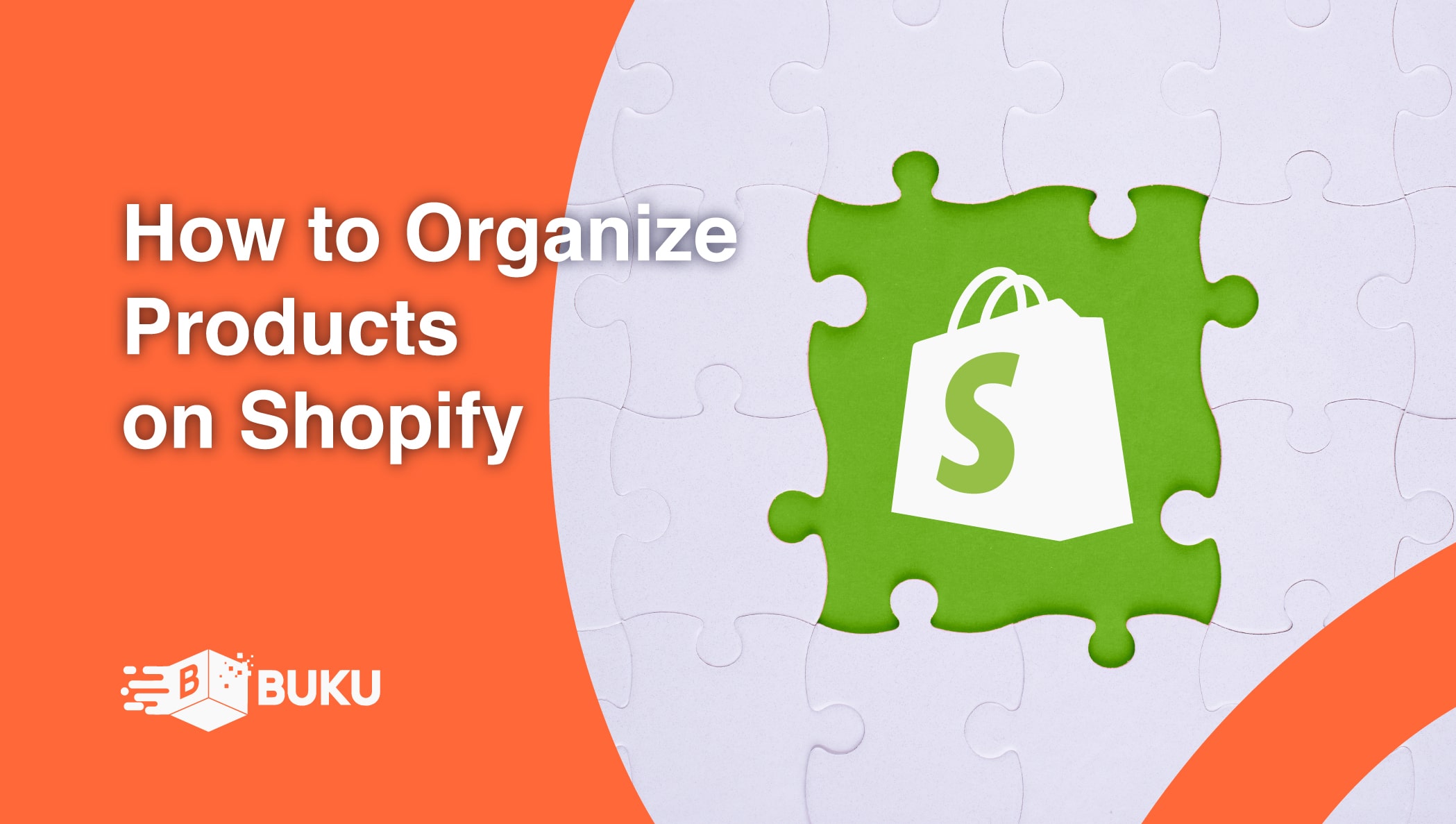
If you want to do something well, you must first take the time to learn how to do that thing correctly. That same motto holds for running a successful Spotify store.
If you’re reading this post, it’s likely because you are the type of person who wants to learn how to do things better and in turn grow your Shopify business.
Table of Contents
1. Why Organizing Your Shopify Products Affects Conversions
2. What’s the Difference Between a Shopify Product Type and a Shopify Collection?
2(a). What’s a Product Type on Shopify?
2(b). What’s a Collection on Shopify?
3. How to Create Product Collections
5. How to Organize Your Products With Tags
6. Additional Tips for Your Shopify Products
7. More Best Practices for Product Listings
8. What is UX/UI and Why Does It Matter?
If you’re a new Spotify shop owner or currently running a Shopify store, but are not seeing sales you had hoped for, then you’re in the right place.
Learning how to organize products on Shopify is a huge step toward increasing your conversions, which means more revenue and greater success for you.
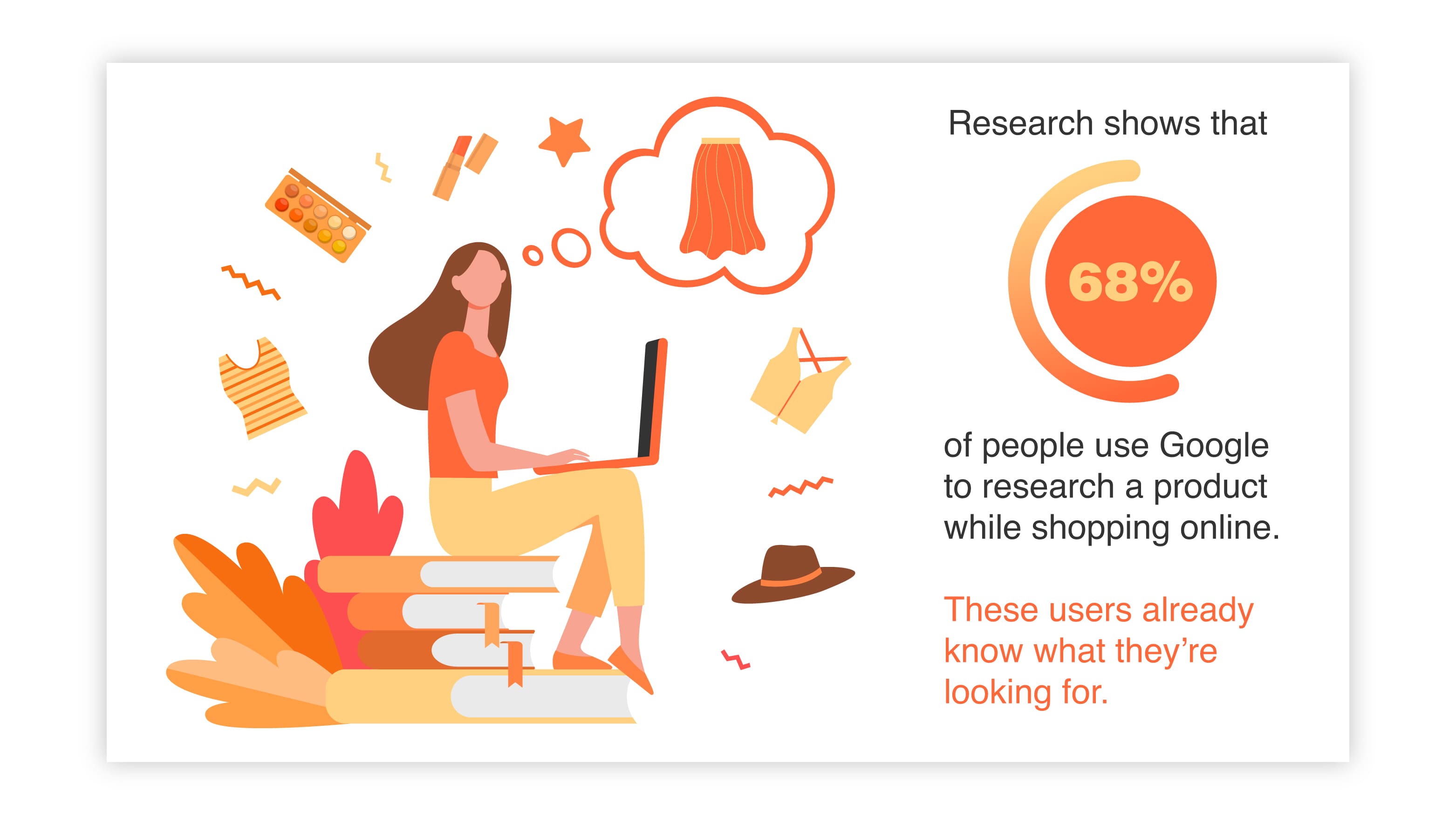
Ecommerce shoppers typically have an item in mind before they visit your site. Research shows that 68% of people use Google to research a product while shopping online. These users already know what they’re looking for. It’s your job to help them find it.
When organizing your products on Shopify, you must consider your customers first. You want to make it as easy for shoppers to find the item they're looking for. Fortunately, Spotify offers tools to make this process easier. All you need to do is understand how to use them to the greatest effect. That's what we're going to do here.
A “product list” is a full list of the products you sell on your Shopify store. But you don’t want your customers to have to sift through hundreds of products to find the one they’re looking for. To make it easier for your customers, you can break your product list down in different ways: product type, collections, and tags.
Using these methods to organize your products is intuitive once you understand how the system works and how to use these tools to your advantage. In this post, we will cover how to organize products on Shopify, and discuss how organizing products directly affects your conversions.
Think of your eCommerce store just like you would a physical retail store. When you walk through the door of your favorite big-box retailer, you are likely greeted by lots of different products – apparel, housewares, electronics, etc.
But those products aren’t all thrown together willy-nilly. They’re organized by type and then further grouped into sections of like products.
That way, if you walk in looking for women’s clothing, you will know to go to the women’s apparel section. And then, if you’re looking for a pair of denim pants, you can find the pants section and then narrow your search down to denim-style pants. Finally, you can look through the pants to find the right size.
There's a good reason that physical retail stores organize their products this way. For one, it makes it easier for their customers to find the size 9 women's denim jeans they came for.
And secondly, it allows customers to see similar products that they might consider as well easily. Instead of seeing toasters or motor oil, they're greeted with more pants racks, which they may want to buy.
When you organize your products on Spotify using this methodology, it will increase your conversions. Conversions are one of the most important measuring sticks eCommerce store owners can use to gauge the overall health of their business.
A conversion rate is the percentage of people who visit your site and make a purchase. Shopify has built-in tools to help you track your conversions.

The most recent data for 2022 reported the average conversion rate on Shopify is 1.8%, with the top 20% of stores averaging above 3.7%. If your store’s conversion rate is lower than the average, it’s probably time to revisit your product organization strategy.
If your store design requires customers to sift through pages of unrelated products, there’s a very high probability you will lose those customers. Online shoppers will not spend more than a minute or two looking for a specific product on your site before giving up and moving somewhere else.
When you're learning how to organize products on Shopify, there are a few important terms you will need to understand. Shopify allows you to use several methods to categorize and organize the products in your store. Starting at the top of the organizational ladder, we have "product types" and "collections."
A product type is the most basic designation that you can assign to a product. It provides information on exactly what "type" of product something is. How detailed your product types are will depend a bit on what your Shopify store sells. If we use the above example of women's denim jeans, the product type could be "pants."
Product types are extremely useful in organizing the products in your store, but more so for you and less for your customers. Sorting your products by type is a great starting point and will help you keep track of inventory and ordering in the back end.
But offering your customers a wide descriptor like “pants” probably won’t help them find the size 9 –women's denim jeans they’re looking for very quickly.
Collections are a further way to separate your product types into smaller "categories." Doing this makes it easier for your customers to narrow their search quickly and find the product that they came for. In our example, you could break down your offerings of pants into collections such as " men's pants," "women's pants," and "children's pants." That way, the shopper looking for that pair of denim jeans won't be searching through pages of men's styles.
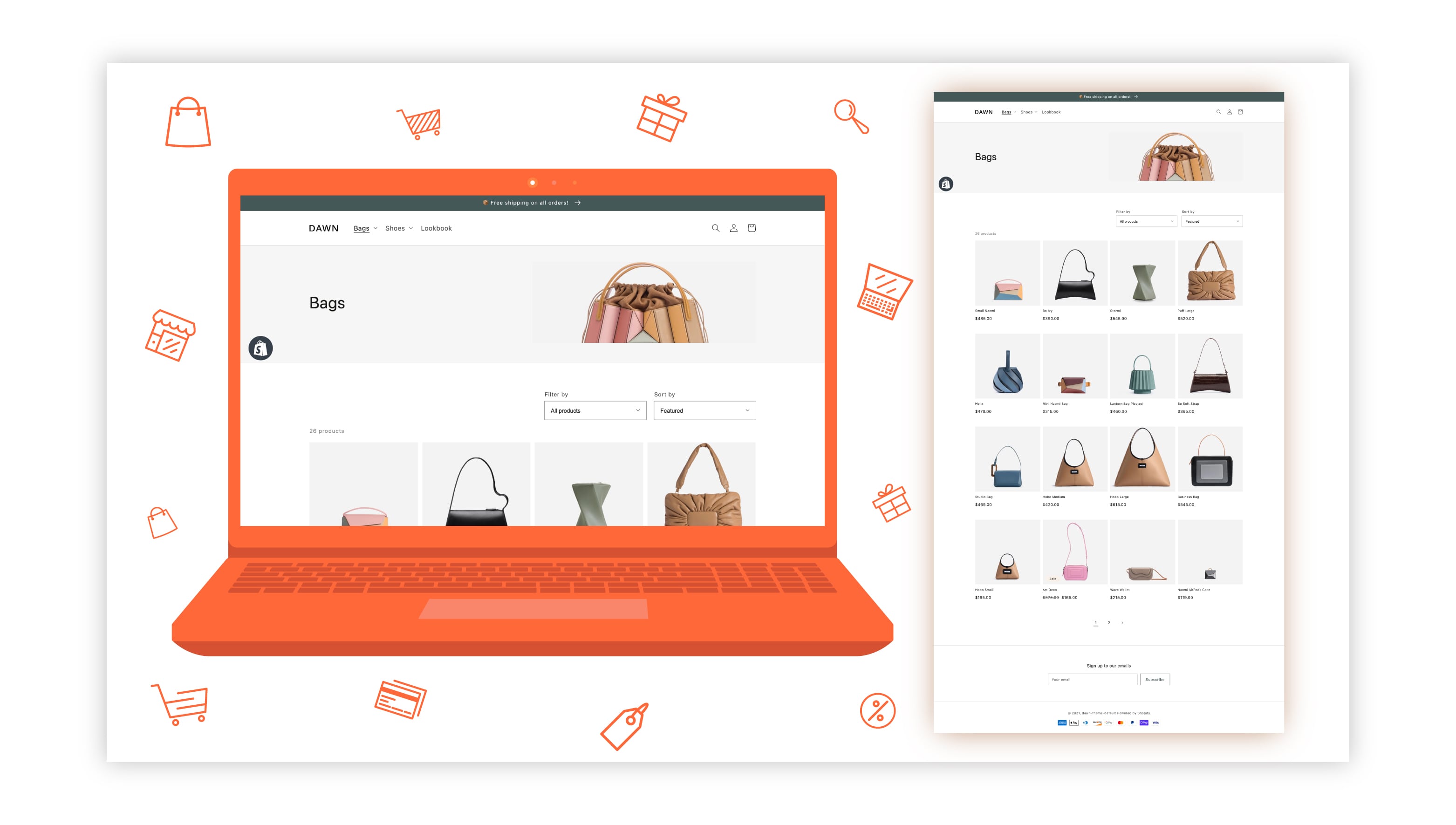
Collections are an efficient way to organize your products. And there are tools on Shopify to make the process easier for you. Some common collections that Shopify owners use include:
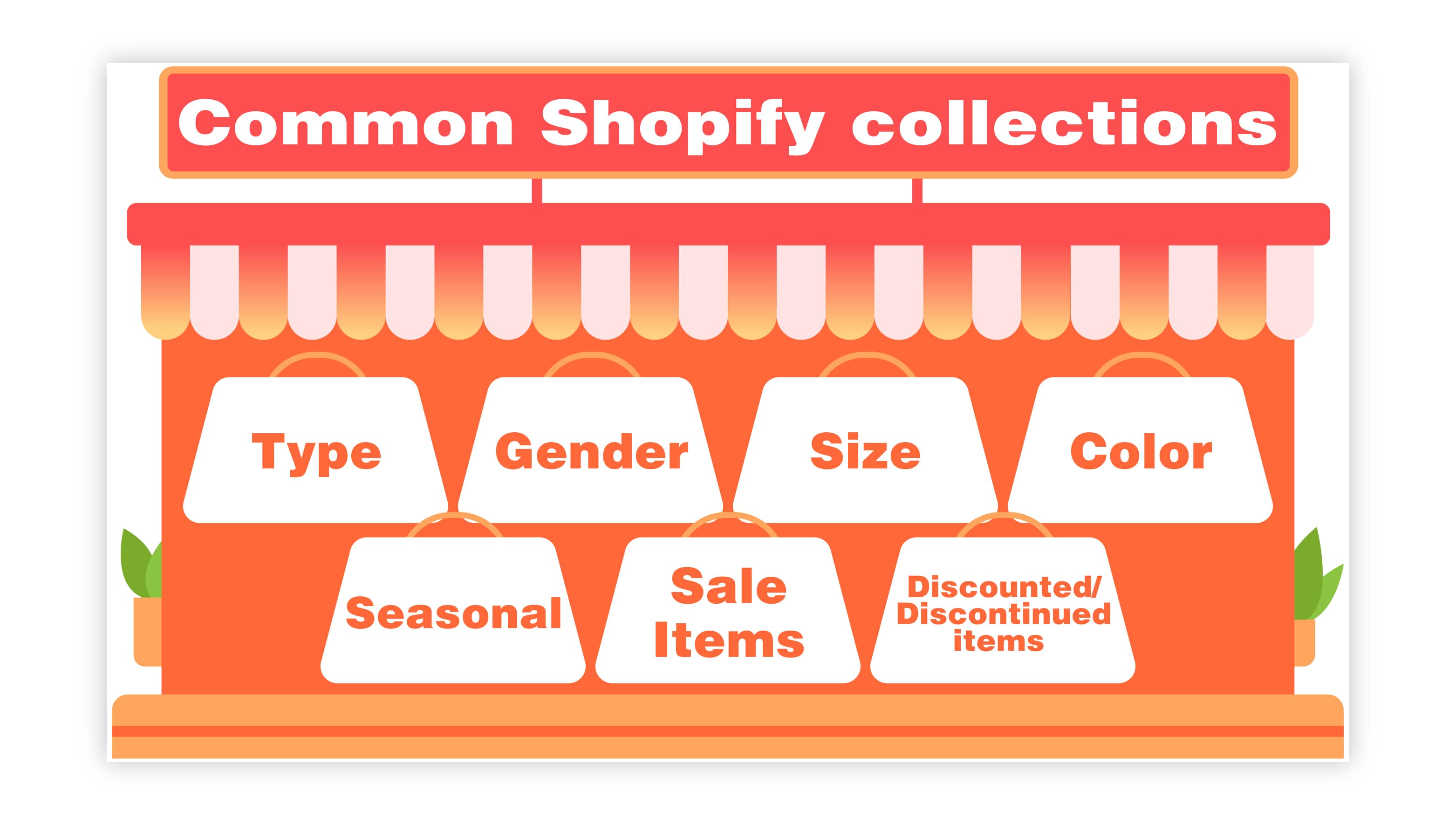
You can set your collections in two different ways: manually and automatically.
Manual collections – To set a manual collection, you select products individually to add to a collection. When adding new products to your store, you will need to add them to a collection manually. This manual addition is the best method for stores with a small number of products or for special, limited-time events.
Automatic collections – Shopify allows you to set automatic collections using certain parameters. An easy way to do this is to use product tags (more on that later), which are an additional tool to help customers drill down into your product selection to find a specific item. Shopify allows you to assign products to an automatic collection using the following features:
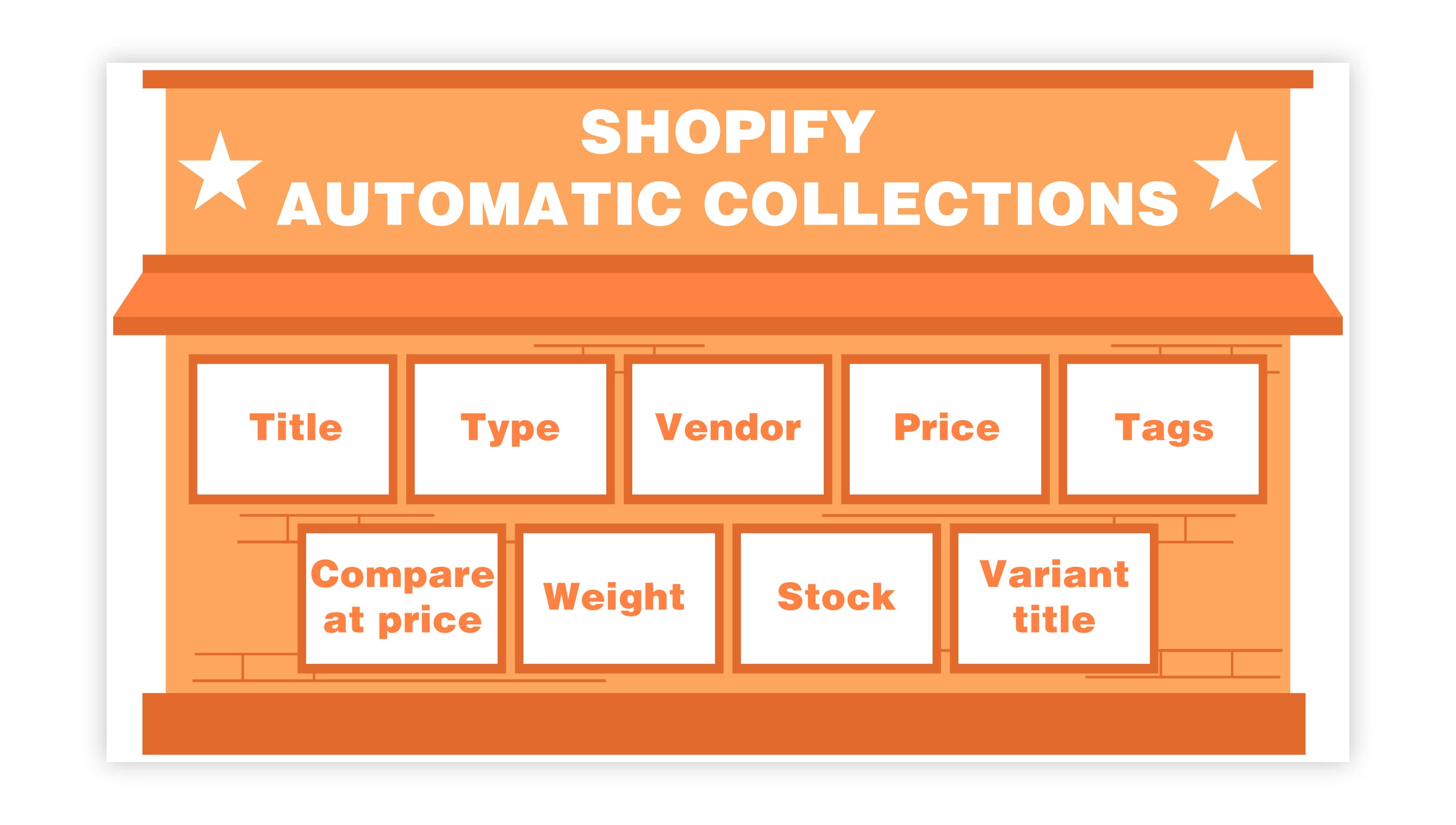
For example, you can use tags to further categorize your collection of women’s pants into groups like “denim pants,” “dress slacks,” and “cargo pants.” When you add a new product to your store, Shopify will automatically add it to the correct collection based on the tags you assign.
For Shopify stores that only have a small number of products, simple collections might be enough to help your customers quickly find the item they’re looking for. However, if you have a large selection of products that fall into different categories, you might need to organize your products on Shopify a little more.
You can achieve this using “nested collections.” Think of these as sub-categories within your collections. Remember, the easier and faster your customers locate the product they’re looking for, the higher your conversions will be.
If you want to know how to organize products on Shopify, you will need to understand how to use product tags. Tags are another way to add layers to your organizational structure and help customers find products based on particular characteristics. Tags are instrumental in directing customers to exactly what they are hoping to find in your store.
Product tags are also helpful because they typically match specific words that customers enter a search bar when browsing online for a product. Product tags increase the likelihood that your store will appear in search engine results, increasing your organic traffic.
You can also use tags to promote your products on social media. Think of the way hashtags are used to increase visibility on posts. You can use tags in advertising and social media campaigns to promote specific collections or sale events.
However, product tags can be a bit of a double-edged sword if not used correctly. Here are some tips on how to use product tags.
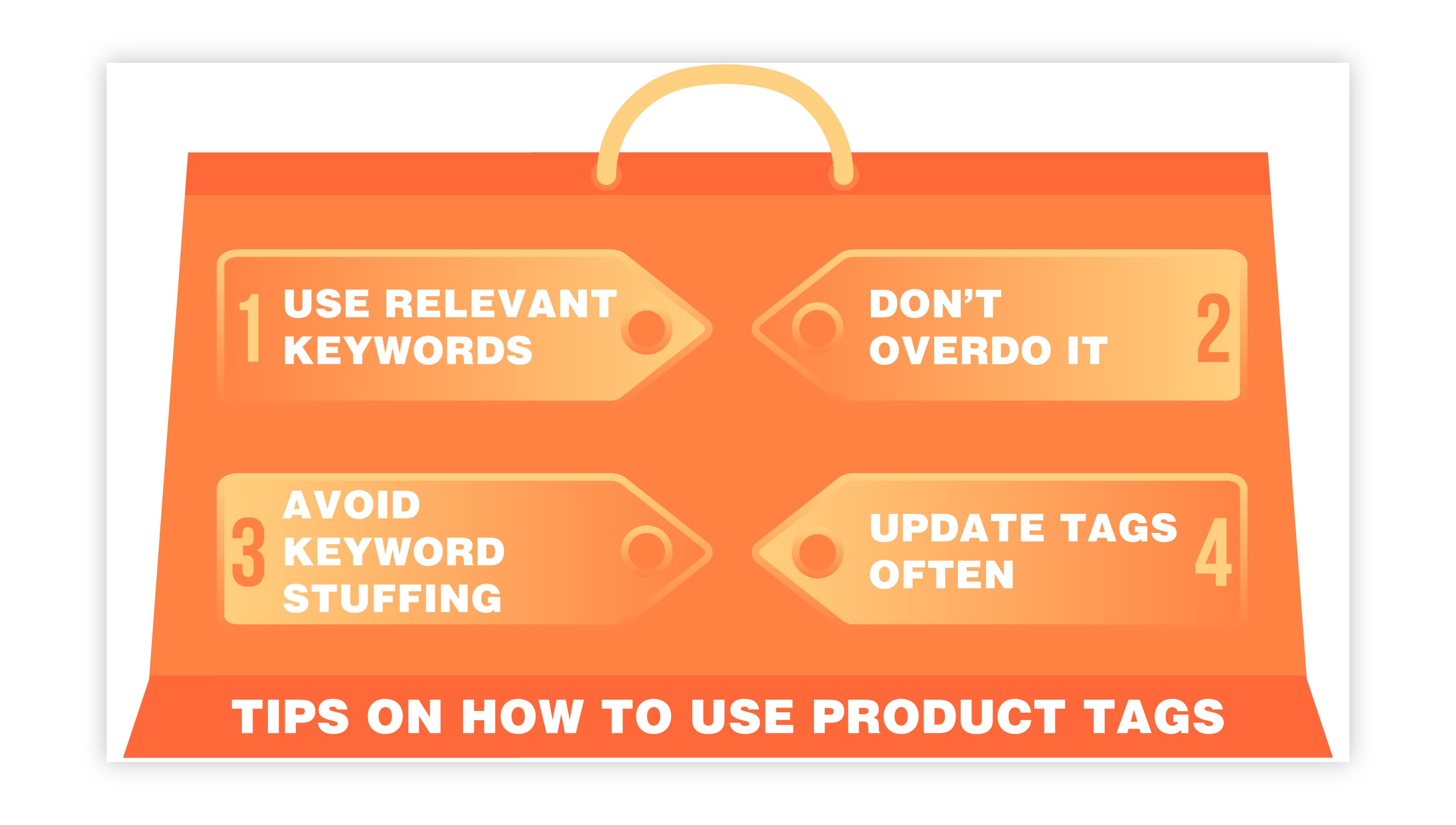
You can attach multiple tags to a single product, which allows you to display that product in several collections based on those tags. Using tags correctly and to your best advantage is one of the most important steps you can take to increase your conversions and draw customers to your Shopify store.
Product tags are a vital part of understanding how to organize products on Shopify. But they're helpful in several different ways. Let's look at the different types of product tags you can use in your eCommerce store and how to use them to your advantage.
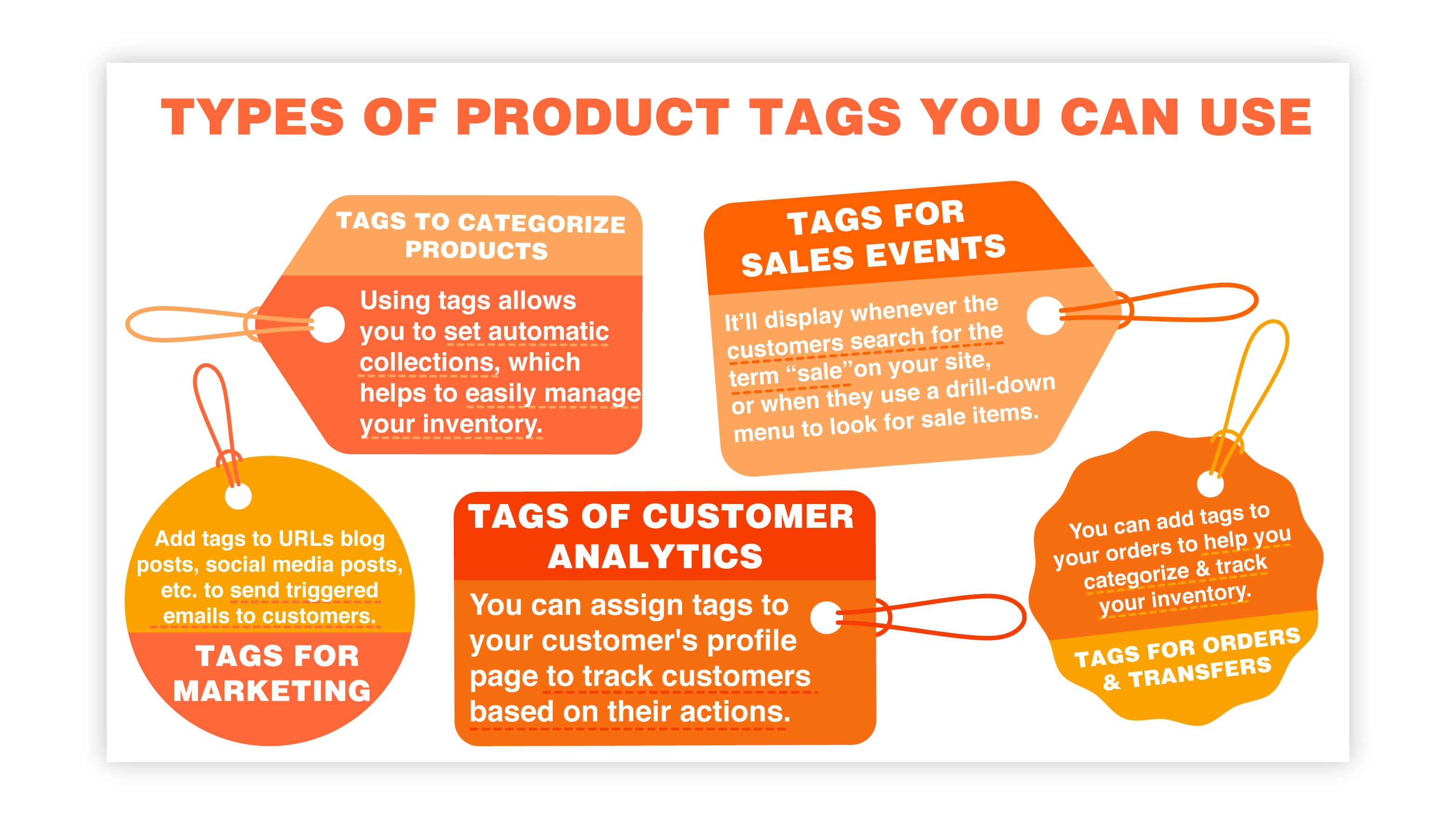
Tags to categorize products – The most important usage of product tags relates to the products themselves. Using tags allows you to set automatic collections, which helps to manage your inventory easily and displays it in an easy-to-find way for your customers.
Tags for sales events – You can also use product tags to promote specific sales or events. For example, if you run a sale on denim pants, you can add a “sale” tag to every item in that collection. Doing so will display those denim pants whenever your customers search for the term “sale” on your site or when they use a drill-down menu to look for sale items.
Tags for marketing – Add tags to social media posts, URLs for blog posts, or send triggered emails to customers. You can also include tags in your advertising campaigns.
Tags of customer analytics – You can assign tags to your customer's profile page to track customers based on their actions or inactions. You can tag customers who are first-time buyers, frequent returners, or inactive users. You can use those tags to filter groups of customers and drill down into your analytics for further evaluation.
Tags for orders and transfers – You can add tags to your orders to help you categorize and track your inventory.
The best advice for deciding how to organize products on your Shopify store is to put yourself in your customers' shoes. You have likely been an online shopper at some point. Think about how you went about the process of finding something online.
Most online shoppers head to the internet with intention – they know what they want and why.
Most people first go to a search engine like Google when they want to find something on the internet. Then they enter a series of words into the search bar relevant to the item they’re searching for. So again, if I'm looking for women's denim jeans, I will probably enter a combination of those words into the search bar. I might also add other words to help narrow my searches, such as the size, specific colors, brand names, or even the term "sale."
If you're a Shopify store owner who wants your selection of women's denim jeans to appear on the first page of those search engine results, then you better make sure that the product name, collection name, and product tags to correlate to the words your customer is using. Otherwise, your site will get buried in the results, and the customer will wind up elsewhere.
Organizing your products on your eCommerce site will require some planning. Here are some tips on how to do it right.
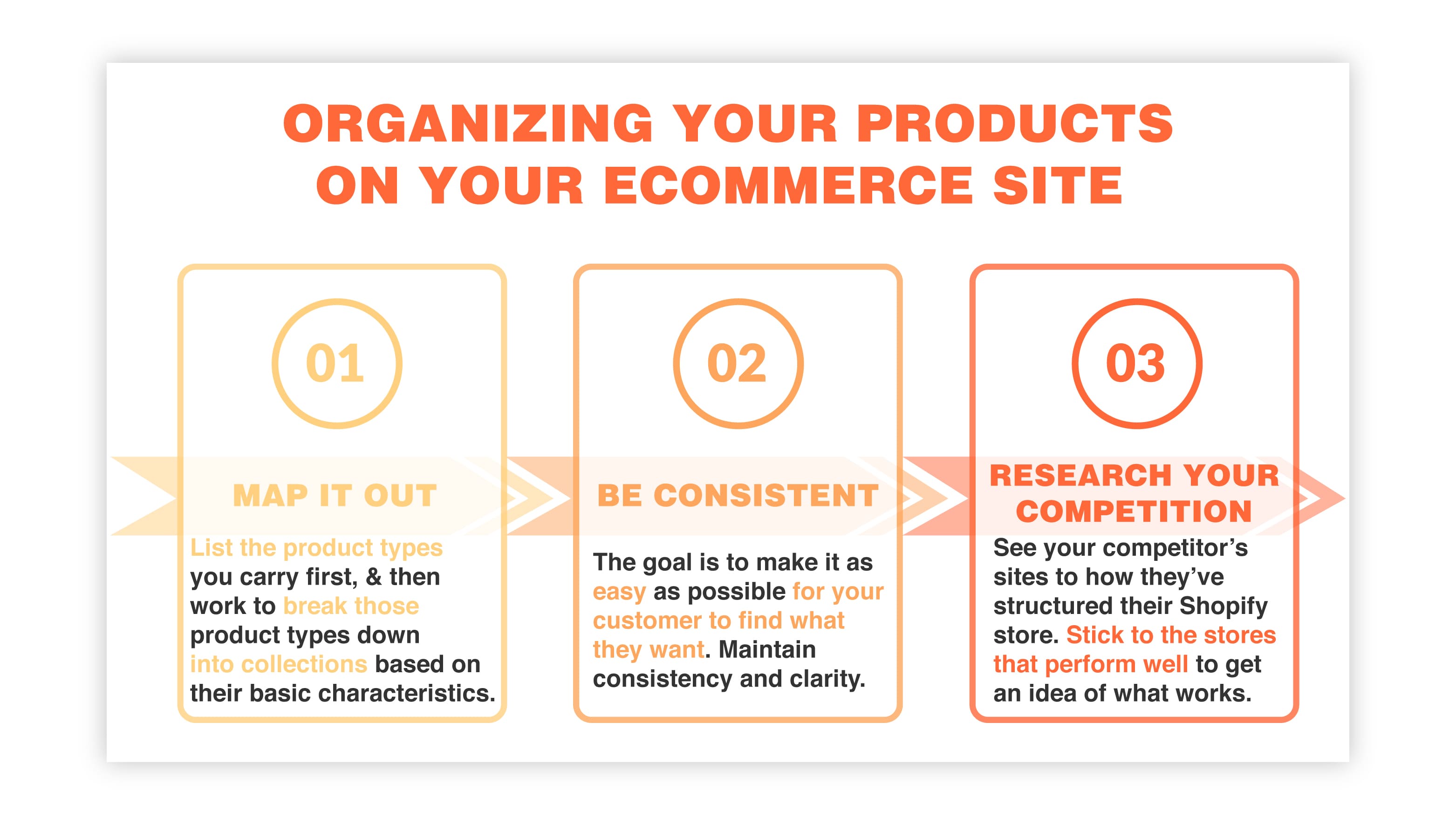
It will be easier to organize your products if you put some planning into the process beforehand. List the product types you carry first, and then work to break them into collections based on their basic characteristics. Then you can create more depth to your collections by adding sub-categories. Don’t get ahead of yourself, or you will get overwhelmed, and frustrated.
Your organizational structure must make sense to both you and your customer. Remember that the goal is to make it as easy as possible for your customer to find what they want. Don't change your style or structure halfway through. Maintain consistency and clarity in organizing your products and the names you choose to give your collections.
If you’re struggling to get started putting together your organizational structure, look around some of your competitor’s sites to see how they’ve structured their Shopify store. Stick to the stores that perform well to get an idea of what works.
Deciding how to organize your products on Shopify is an important first step. It is vital to use the tools that Shopify provides to create collections and make it easier for your customers to find what they’re looking for. Do it right, and you will see a boost in conversions.
Another part of this equation is the product listing itself. When customers find the item they’re looking for, they will click on the link. They are then directed to the product listing page.
The information on the product listing page needs to do several things. It needs to provide the customer with all the information about a product. It should display the product to the best advantage. And it should include keywords and tags that will help search engines list the product on the results page.
A good product listing page should be detailed without being wordy. It needs to sell the product without being “salesy.” Here are some tips on what to include in your product listing pages.
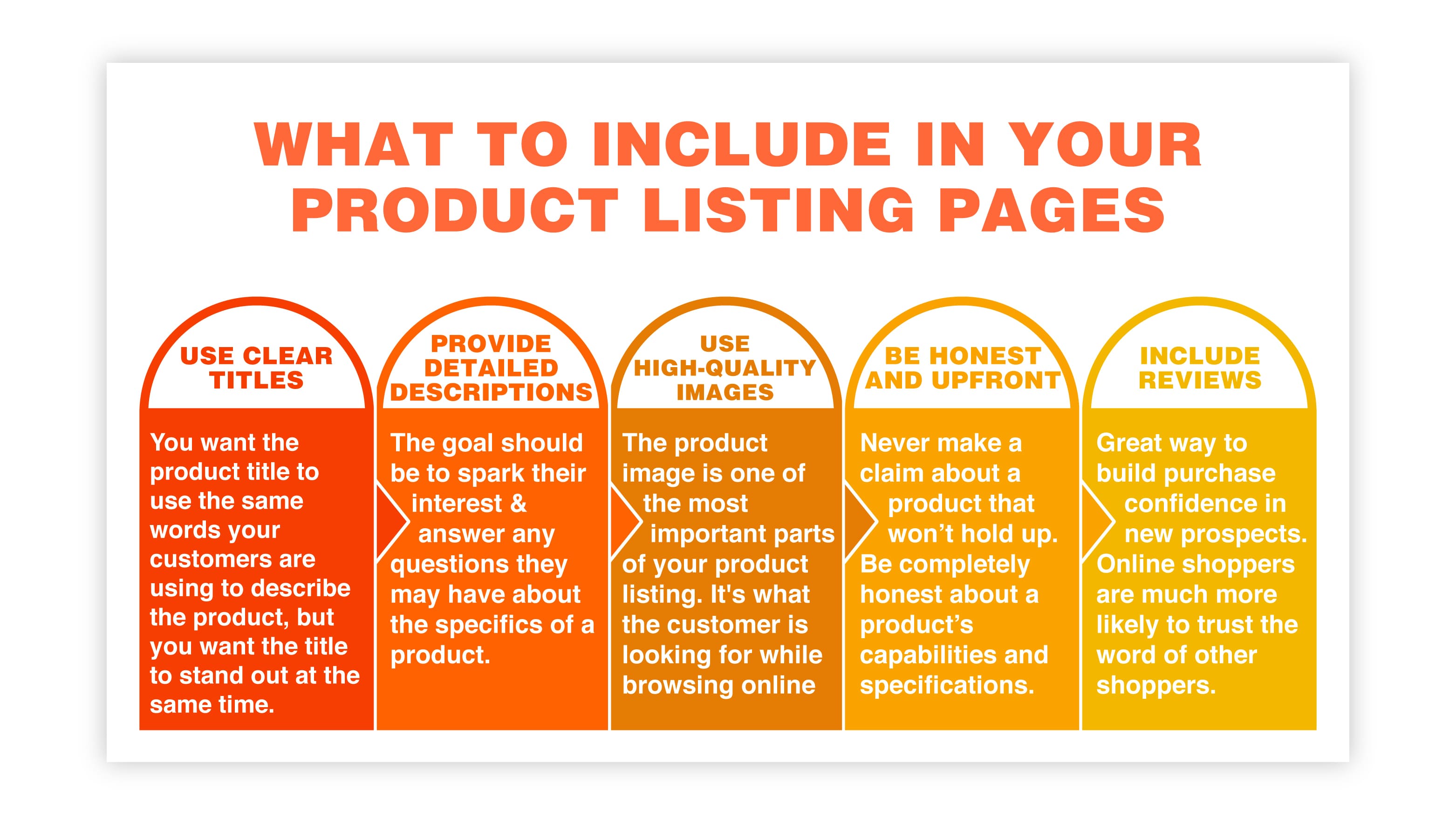
The product title is the one piece of information your customers and the search engine will see first. Make sure you create titles that convey the product without using flowery or unnecessary wording. You want the product title to use the same words your customers are using to describe the product, but you want the title to stand out simultaneously.
A vague disclaimer is nobody’s friend. The product description should include everything the customer needs to know about the product. The goal should be to spark their interest and answer any questions they may have about the specifics of a product.
The product image is one of the most important parts of your product listing. It's what the customer is looking for while browsing online. It's what they're looking for when they make it to your Shopify store. And if there is no image, or all they get is a fuzzy stock photo, they will be gone faster than you can say "cheese."
Never make a claim about a product that won’t hold up. Be completely honest about a product’s capabilities and specifications. Otherwise, you risk creating unhappy, angry customers who will only demand a refund.
Putting reviews from past customers on the product listing page is a great way to build purchase confidence in new prospects. Online shoppers are much more likely to trust the word of other shoppers.
Learning how to organize products on Shopify requires a basic understanding of the terminology used in the industry and by Shopify itself. We've already discussed the difference between product types, collections, and tags.
But you should know two more terms if you want to build a successful Shopify store: UX and UI.
Here's what they mean and why they should matter to you as an eCommerce store owner.
UX, or “User Experience,” describes the actual customer experience. Your Shopify store describes how the customer experiences every step of the shopping process, from the very first moment they enter your site (or sooner), to how they feel about the product organization and to their checkout experience.
A great customer experience is paramount to running a successful eCommerce store. Because if you’re not working to provide that experience, you can be certain that your customers will look for it elsewhere.
UI, or "User Interface," describes the components of your website that users interact with. In the case of your Shopify store, it's things like the search bar, the buttons and links on a page, and the visual elements you include in your design. These items are an important part of the user experience because your shoppers rely on them to navigate your site.
The whole topic of this blog post is about making the online shopping experience easier and more enjoyable for your customers. And that's the basis of UX and UI. It means optimizing every interaction your customers have with your store and putting the right framework in place to make their visit as frictionless and smooth as possible.
“Friction” is a term used in the eCommerce industry to describe anything that makes it harder for customers to make a purchase. It could be a slow page loading speed, a messy storefront, low-quality images, or poorly written product descriptions. The checkout experience is one of the biggest causes of friction for online shoppers and one of the leading causes of cart abandonment.
Another major cause of friction for your customers is a poorly organized store, including how you group and organize your products. If a customer must spend too much time looking for an item or comes across a product description that is poorly written and doesn't describe the product well, the probability of them changing their mind increases exponentially.
Ecommerce is a tricky business, but one that can be extremely profitable if done correctly. A successful Shopify store has great products, a well-designed site, consistent branding, and a frictionless visitor experience.
Part of creating that experience is making it as easy as possible for your customers to find what they’re looking for and your site in the first place. Figuring out how to organize products on Shopify is an important step in creating a pleasant and satisfying shopping experience for your customers – and one that will hopefully end up with that customer making a purchase.
Organizing your products to your best advantage and with your customer in mind will generate more conversions for your store. And that’s the whole idea behind selling online. Without a sale, you’re dead in the water.
Starting any new business requires navigating a bit of a learning curve. Nobody can step into the role of a business owner and expect to know everything immediately. And that’s okay. If you plan your strategy ahead of time and make a continuous effort to improve, then you’re taking positive action – and customers will reward that action.

The supply chain is a term used to describe all the components required to transport goods from beginning to end, from production to the end...

A smart warehouse is a large building where raw materials and other consumer goods are stored using machines, computers, comprehensive software, and...

Direct-to-consumer (DTC) fulfillment is a strategy that helps brands sell and deliver their products directly to customers more efficiently while...